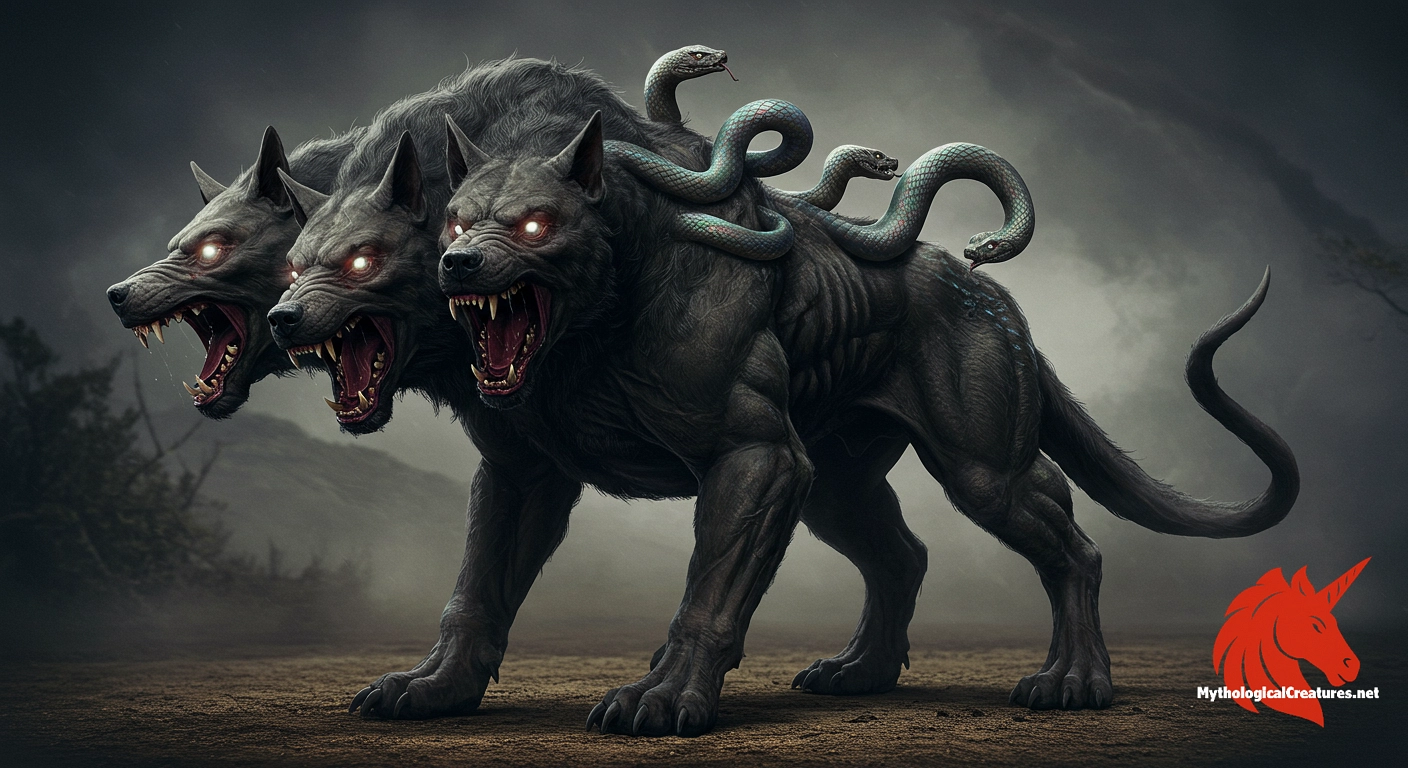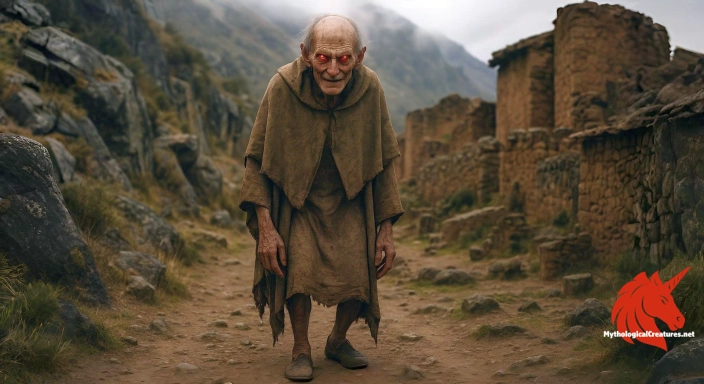Cerberus: Cerberus is the fearsome, three‐headed hound of Hades, tasked with guarding the gates of the underworld.

Cerberus
Cerberus - Cerberus is an iconic figure symbolizing the boundary between life and death and the enforcement of cosmic order in Greek mythology.
Origins & First Encounters
Cerberus stands as one of the most iconic creatures of ancient mythology, embodying the menace and mystery of the underworld. Born of the monstrous Echidna and Typhon, this formidable hound was destined to serve as the guardian of Hades’ realm. His primary role was to guard the gates of the underworld, ensuring that the souls of the dead did not escape. His myth emerged during a time when boundaries between life and death were heavily symbolised through animal forms and supernatural beings. The creature’s origin is rooted in Greek myth, yet his influence has traversed centuries and borders, demonstrating his enduring presence in cultural imagination. Early depictions emphasised his role in the cycle of life and death and his fearsome appearance. As a central figure in the heroic labours of Heracles, Cerberus represents the challenge of confronting one’s own mortality. His myth interweaves with themes of retribution, duty, and the inescapable power of the divine. Ancient audiences found in his terrifying visage a reflection of the mysterious forces that governed the natural and supernatural worlds. His enduring legacy as the fearsome custodian of the underworld enriches the tapestry of myth, inviting continual reinterpretation in art and literature.
Source Texts & Tale Variants
The earliest accounts of Cerberus appear in various fragments of Greek literature and mythographic texts, each presenting a slightly different narrative. Ancient poets and mythographers depicted his capture by Heracles as one of the labours that tested the very limits of mortal bravery. Classical sources such as narratives found in the works attributed to Hesiod and later mythographers contribute vivid portrayals of his multitudinous heads and serpentine features. Heracles’ task of subduing Cerberus is recounted with several variations that reflect the storyteller’s emphasis on different aspects of his monstrous nature. Some accounts maintain the strict three-headed form, while others hint at additional, more ominous features that further amplify his terror. The creature’s portrayal in early texts often interlaces elements of both fear and respect, underscoring the duality of his role as protector and punishment. Variations in his depiction allowed ancient audiences to negotiate the boundaries between chaos and order, as his image was instrumental in ritualistic and heroic narratives. These narrative differences underscore the cultural significance of Cerberus in antiquity, as each version served to instruct and inspire. His consistent appearance across multiple texts reflects the shared mythic vocabulary of the ancient Mediterranean world. Diverse sources have thus contributed to a multilayered myth, where each rendition adds depth to his fearsome persona.
Form & Powers
Cerberus is most famously depicted as a monstrous hound with three imposing heads that gaze fiercely into the souls of those who dare approach. Each head is described as possessing keen, burning eyes and powerful jaws, capable of delivering a ferocious bite. His body, robust and muscular, is decorated with a tangled mane and bristling fur that hints at his wild and untamed nature. Adding to his ominous appearance, a sinuous serpent replaces what might be expected as a conventional tail, its movements echoing the unpredictability of the underworld. In some descriptions, additional snakes emerge along his shoulders or back, further accentuating his hybrid character. His overall stature is imposing, combining the intelligence of a canine with the supernatural threat of formidable mythical beasts. The creature’s physical form symbolises the chaotic forces that dwell at the entrance to death, blending animalistic savagery with divine punishment. Variations in artistic and literary depictions often play with the size and number of his heads, ensuring his representation remains both captivating and terrifying. His fearsome countenance is complemented by the suggestion of immense strength and unyielding loyalty to Hades. Such detailed descriptions not only enhance his legendary stature but also cement his role as the ultimate guardian of the realm of the dead.
Regional Faces
While Cerberus is predominantly a figure of Greek mythology, his image has been adapted and reinterpreted across various cultural contexts over the centuries. In Hellenistic and Roman portrayals, subtle shifts in his depiction reflected local tastes and interpretative nuances, with some versions emphasising even greater numbers of heads to amplify his formidable nature. Regional artistic traditions often blended local mythic elements with the established Greek narrative, resulting in depictions where Cerberus acquired additional serpentine features or a more animalistic ferocity. In certain local adaptations, the creature was illustrated with a more pronounced, almost lion-like hindquarter, symbolising strength and dominance. The integration of Cerberus into Roman literature further underscored his role as a boundary guardian, albeit with a slightly more refined or even allegorical presentation. This geographical diversity in his portrayal echoes the broader tendency of myth to evolve with shifting cultural and societal influences. In some medieval reinterpretations, elements of Cerberus were absorbed into local legends, where he merged with other monstrous hounds synonymous with the underworld. Such variations illustrate the fluidity of myth, where each region contributed its own artistic, literary, and religious perspectives. Despite these regional shifts, the core attributes of his character remained consistent, reinforcing his status as a universal symbol of death and protection. This adaptability speaks to the timeless power of his myth and its ability to resonate in diverse cultural landscapes.
Cultural Parallels
Cerberus finds interesting parallels in a number of mythological traditions beyond the Greek literary canon. Comparable guardians such as the Norse hound Garmr, who is said to guard the entrance to Hel, share similar themes of life, death, and cosmic order. Both creatures serve as liminal figures, positioned at the threshold between the world of the living and the realm of the dead. In Eastern traditions, the notion of multi-headed or multi-bodied guardians can also be observed, subtly echoing the characteristics of Cerberus in their function as protectors of sacred spaces. These cross-cultural comparisons highlight how myriad societies have used the motif of the monstrous guard to symbolise the boundary between mortal existence and the unknown. The description of Cerberus has even influenced modern portrayals of hellhounds in literature and cinema, where echoes of his three-headed form persist amidst new interpretations. This comparative analysis reveals a shared human anxiety about the afterlife, encapsulated in the figure of an overwhelming and terrifying guardian. Much like other mythic creatures that straddle the worlds of chaos and order, Cerberus embodies both the fear and fascination that the unknown invokes. These cultural parallels not only bridge disparate mythological traditions but also underscore a common symbolic vocabulary regarding death and the sanctity of boundaries. His enduring image continues to resonate with audiences regardless of cultural background, making him a unique focal point in the study of mythological guardians.
Legacy & Modern Evolution
Over the centuries, the legacy of Cerberus has evolved from an unequivocal symbol of terror into a multifaceted icon in art, literature and modern media. In classical antiquity, he was a stark embodiment of the ultimate barrier between life and the netherworld, and his capture by Heracles was celebrated as a monumental heroic achievement. With the resurgence of classical themes during the Renaissance, artists and writers reimagined Cerberus with a blend of dread and allegory, highlighting not only his monstrous form but also the human fascination with the afterlife. Over time, his image has been adapted into various cultural products, including paintings, sculptures, and literary works, where he often retains his grim duty as the guardian of the underworld. In contemporary popular culture, Cerberus appears in films, television series, video games and even comic books, where his fearsome visage is sometimes softened or reinvented to suit new narrative contexts. Modern reinterpretations often explore the duality of his character, making him an emblem of both the inevitability of death and the possibility of transcendence. This evolution reflects a broader shift in the portrayal of mythological creatures, from literal threats to complex symbols open to reinterpretation. Cerberus continues to inspire creative expressions that challenge our perceptions of mortality and the afterlife. His blend of horror and heroism means that he remains a potent metaphor within modern storytelling, inviting fresh insight into ancient symbols. Today, as audiences look to the past for understanding, Cerberus endures as both a relic of myth and a living component of cultural dialogue.
Interesting Fact
Despite his terrifying appearance, Cerberus is often depicted as a loyal servant to Hades, bound by duty to maintain the order of the afterlife rather than acting out of inherent malice.
Quick Creature Info
Origin:
Our Mythic Legendary Rating:

Also Sometimes Known As:
Habitat:
Supernatural Powers:
Physical Attributes:
Abilities:
Behavior:
Lore:
Related Creatures, Tales or Lore
- OOrthrus
- CCŵn Annwn
- BBlack Shuck
References
Discover Another Mythical Legend You May Not Have Heard Of?
Uncover the mysteries of ancient folklore and expand your knowledge of legendary beings from cultures around the world.
Dare to Meet the Abchanchu....
Mythical Disclaimer: The images and data on this site are derived from various historical and literary sources, but we have found that many myths often have multiple versions and interpretations across references, sometimes contradictory. As a result, these creature depictions are artistic interpretations—imaginative blends of folklore, legend, and a dash of AI guesswork. Because creature descriptions vary widely, our illustrations and accompanying information represent our best effort to honor mythology while bridging creative gaps. Enjoy these interpretations—just remember, we've done our best to respect the stories and validate available data, but in the realm of mythology, details often shift, imagination leads the way, and nothing is ever set in stone!
Curated by the Mythological Creatures Team (rev. May 2025)
